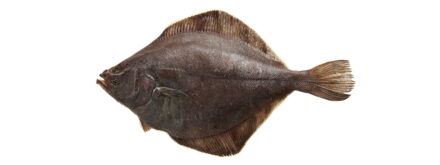
Halibut

With its firm, flaky texture and delicate flavor, wild Alaska halibut has earned its reputation as the world’s premium whitefish.
Watch the video
-
Scientific name: Hippoglossus stenolepsis
-
500 lbs
Wild Alaska halibut females can grow to be over 8 feet long and weigh over 500 lbs.
2 certifications
The Alaska halibut fishery is certified under two independent certification standards for sustainable fisheries, RFM & MSC.
55 years
Alaska halibut is a long-lived species with a lifespan of up to 55 years.
-
Nutrition
-
Alaska halibut is packed with lean, high-quality protein and marine derived omega-3 fatty acids, essential to the human body.
The high protein content of wild Alaska halibut is easily digestible, and has all nine amino acids the body can’t produce itself — a complete protein of the highest quality.
Benefits of complete high quality protein:
- Build and maintain lean body mass
- Regulation of metabolism
- Improved satiation—leading to lower intake and possible weight loss
- Stronger muscles, resulting in greater mobility, strength, and dexterity
Benefits of Selenium:
- Acts as a powerful antioxidant
- Prevents cognitive decline
- Vital for thyroid health
- Boosts the immune system
- May reduce risks of cancers
- May protect against heart disease
DV = Daily Value // 3.0 oz = 85g Source: USDA Standard Reference Release 28
-
Harvesting & Seasonality
-
Alaska halibut is harvested and available fresh from March through mid-November and frozen year-round.

Alaska halibut are harvested using a method called longlining.
Learn More -
Sustainability & Environment
-
In Alaska, protecting the future of both the halibut stocks and the environment takes priority over opportunities for commercial harvest. Halibut management in Alaska is a collaborative process, in which the International Pacific Halibut Commission (IPHC) assesses stocks and sets catch limits annually. From these limits, the North Pacific Fishery Management Council (NPFMC) allocates quota to fishermen. For nearly 100 years, the IPHC has set sustainable catch limits to ensure wild Alaska halibut are available in Alaska for generations to come.
Certification
The Alaska halibut fishery is certified under two independent certification standards for sustainable fisheries:
- Alaska Responsible Fisheries Management (RFM)
- Marine Stewardship Council (MSC)
-
Fun Facts
-
- Like flounder and sole, they are flatfish with two eyes on one side of their head
- Nearly all halibut have their eyes on the right, but 1 in 20,000 will have them on the left
-
Product Forms & Availability
-
Wild Alaska halibut is available fresh and/or frozen depending on the season in formats like headed & guttted, fillet, dressed, steaks & loins, and cheeks.
Halibut cheeks, a delicacy, are cut from the fish’s head near and around the lower eye. Many describe them as somewhat like scallops in both texture and shape, and they provide a sweet and luxurious flavor. Also like scallops, they take particularly well to grilling, roasting, and pan-frying and cook quickly. Cheeks vary in size depending on the size of the halibut. They range from a small size (like a scallop) to larger sizes (like a burger patty). They are a seafood-lovers favorite so grab them whenever you see them!
Find wild Alaska halibut in your local grocer in the frozen and fresh sections in fillets, portions, steaks, cheeks, breaded and various other options. Unsure about origin? Just #AskforAlaska and look for the Alaska Seafood logo.
Purchase directly from sellers using our supplier’s directory.
Buy Now -
Cooking
-
This lean, mild and meaty whitefish is extremely versatile for use in a variety of different recipes that include baking, grilling, searing, sautéing, and steaming.
Learn More










